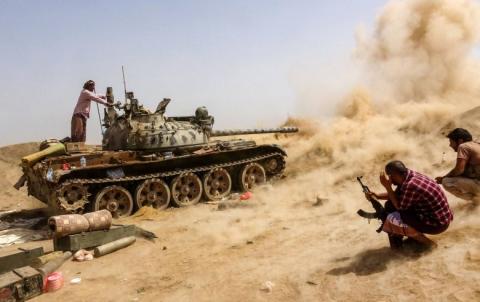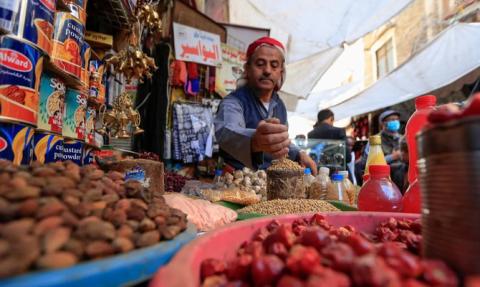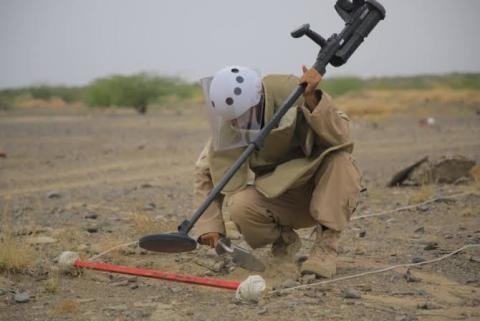Yemen’s children: A crisis within a crisis


The Yemeni conflict, the world’s worst humanitarian crisis, grinds on. Despite a rare exchange of prisoners, fighting in October claimed over 50 lives in the port city of Hodeida—the main conduit for aid.
More died fighting in Marib and Jawf provinces. This worsened a devastating toll of 80 percent of the population—24 million people—needing humanitarian aid. Nearly half are acutely food insecure, with 2 million facing crisis levels of hunger. The COVID-19 pandemic has worsened this tragedy and the U.N. says deaths could exceed 230,000 with a death rate five times the global average. Only half of the country’s health centers are fully operational. Cholera continues to spread with 180,000 new cases reported in the first eight months of 2020. Economic activity is down by 50 percent, and the poverty rate is up to 80 percent as the middle class erodes. The 10 percent of the population reliant on remittances are seeing declines of up to 80 percent. There are 3.6 million internally displaced people (IDPs) in the country with 155,000 added in the first half of 2020. Even if the war ends in 2021, development would have been set back 25 years—40 years if it ends in 2030.
Within the broader tragedy, Yemen’s children, especially the 2 million who are IDPs, are the most vulnerable. UNICEF says 12 million need urgent humanitarian assistance. By the end of 2020, the number of malnourished children under age 5 could reach 2.4 million—half the children under 5 in the country. The mental and emotional toll has also been high with over half of children struggling with depression—with long term consequences for their future as productive individuals.
As of June 2019, over 7,500 children had been killed in Yemen since the beginning of the war due to airstrikes, shelling, mines, and other ordnance. The U.N. says current figures are worse but unreported since monitoring is increasingly difficult. Yet the toll mounts unabated and even after the much-reported 2018 death of 44 children in a school bus bombed by the Saudis, such attacks continue. As do arms sales to the Saudis from, among others, the U.S., France, and Canada. The U.N. has also documented thousands of child soldiers, most with the Houthi rebels but also with the government and other fighting forces.
Before the pandemic, 2 million children were out of school and another 3.7 million were at risk of dropping out. Girls were at greater risk with 36 percent out of school versus 24 percent for boys. Pandemic closures increased that number to 8 million. While schools have begun to slowly reopen, many children will likely stay away, some succumbing to negative coping mechanisms like child labor, child marriages, child soldiers, or other forms of exploitation. Other children are kept home for fear of infection or because parents cannot afford the cost of schooling. Prior to the pandemic, 4.7 million children needed educational assistance across the country, including 3.7 million in acute need.
Some 2,000 schools, 20 percent of the total, have been rendered unusable, either destroyed or used to house IDPs, or as centers for isolating COVID-19 patients, etc. In the past five years, 380 schools have been attacked, caught in crossfire, or occupied by fighters, including 153 hit by airstrikes from the Saudi-led coalition.
Yemen’s teachers are largely unpaid, forced to take second jobs or move on to other employment. Many try to work out of a sense of responsibility, but their situation is not tenable as evidenced by recent strikes. UNICEF needs $70 million to pay stipends to 160,000 teachers and school-based staff, less than half the total number. Lack of educational supplies and inadequate sanitation, especially for girls, remains a challenge.

Yemeni officials on Monday condemned arrests and prosecutions by the Iran-backed Houthi militia directed against media, journalists and celebrities…

Yemen's warring parties are gearing up for new waves of conflict in 2023 amid a lack of decisive steps towards sustainable peace, adding to the suf…

The UAE will help to recruit doctors and deliver crucial supplies for hospitals in Yemen under a major healthcare drive. The Khalifa bin…